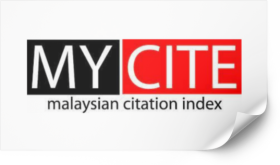Flammable Gas Dispersion Modelling on an Offshore Platform
DOI:
https://doi.org/10.37934/progee.28.1.2842Keywords:
Flammable gas, Dispersion modelling, Offshore platform, ALOHA, PHASTAbstract
Flammable gas dispersed from the vent on an offshore platform can react in an explosive manner by the existence of air or pure oxygen at a certain concentration within its flammability limits. Due to unwanted accidents that might occur, resulting in loss of life and asset damage thus, flammable gas dispersion modelling was conducted to identify any recommendation or mitigation if required. Due to no risk assessment on the offshore platform to perceive the dispersion model based on various perspectives, multiple software was used in assessing recommendations and mitigation. Therefore, the flammable gas dispersion study carried out was to obtain dispersion modelling on the identified offshore platform's vent as an early solution to avoid the occurrence of risk scenario. The model of flammable gas dispersion has been developed by using two notable fire and explosion modelling software: Areal Locations of Hazardous Analysis (ALOHA) and Process Hazard Analysis Software Tool (PHAST). The meteorological conditions consist of wind speed, and atmospheric stability has been used as manipulated variables. Meanwhile, the vent designs (height, diameter, angle, pressure, temperature and flowrate of flammable gas release) and vent composition remain unchanged for all the selected weather conditions. The impairment assessment conducted showed the dispersion contour obtained through ALOHA and PHAST, no risk reduction and recommendations required as the plume dispersed at the highest cloud height, thus both the manned area or escape routes and muster area were not affected by the flammable gas released from the vent.
References
Myrto. Konstantinidou, Michalis. Christou, and European Commission. Joint Research Centre. Institute for Energy and Transport., Safety of offshore oil and gas operations: lessons from past accident analysis: ensuring EU hydrocarbon supply through better control of major hazards. Publications Office, 2012.
R. Pula, F. I. Khan, B. Veitch, and P. R. Amyotte, A grid-based approach for fire and explosion consequence analysis, Process Safety and Environmental Protection 84(2) (2006) 79–91. https://doi.org/10.1205/psep.05063.
S. Saad Alghamdi, Development of a vapor cloud explosion risk analysis tool using exceedance methodology, PhD Dissertation, Texas A&M University, 2011.
U. Lee and J. S. Oh, A study on natural gas dispersion modeling for gas safety platform development, International Journal of Control and Automation 10(12) (2017) 147–164. https://doi.org/10.14257/ijca.2017.10.12.14.
C. M. Sheih, A puff pollutant dispersion model with wind shear and dynamic plume rise, Atmospheric Environment 12(10) (1978) 1933–1938. https://doi.org/10.1016/0004-6981(78)90127-0.
M. Markiewicz, A review of mathematical models for the atmospheric dispersion of heavy gases. part i. a classification of models, Ecological Chemistry and Engineering S 19(3) (2012) 297–314. https://doi.org/10.2478/v10216-011-0022-y.
A. Leelossy, F. Molnar, F. Izsak, A. Havasi, I. Lagzi, and R. Meszaros, Dispersion modeling of air pollutants in the atmosphere: a review, Open Geosciences 6(3) (2014) 257–278. https://doi.org/10.2478/s13533-012-0188-6.
J. B. Johnson, An Introduction to Atmospheric Pollutant Dispersion Modelling, Environmental Sciences Proceedings 19(1) (2022) 18. https://doi.org/10.3390/ecas2022-12826.
P. Mocho, V. Desauziers, H. Plaisance, and N. Sauvat, Improvement of the performance of a simple box model using CFD modeling to predict indoor air formaldehyde concentration, Building and Environment 124 (2017) 450–459. https://doi.org/10.1016/j.buildenv.2017.08.033.
I. Zheleva, G. Popov, P. Rusev, K. Tujarov, K. Klimentov, and I. Nikolaev, GUIDELINE Air Quality Assessment Based on Road Traffic Ruse, 2014 GUIDELINE-Air Quality Assessment Based on Road Traffic Pollutants Dispersion Modelling Digital printing-Primax GUIDELINE-Air Quality Assessment Based on Road Traffic Pollutants Dispersion Modelling. 2014.
J. D. W. Kahl and H. L. Chapman, Atmospheric stability characterization using the Pasquill method: A critical evaluation, Atmospheric Environment 187 (2018) 196–209.
https://doi.org/10.1016/j.atmosenv.2018.05.058.
C. S. Borrego, M. S. Coutinho, and M. J. Costa, Introduction of terrain roughness effects into a gaussian dispersion model, Science of The Total Environment 99 (1990) 153–161. https://doi.org/10.1016/0048-9697(90)90220-O.
X. Xie, Z. Huang, J. Wang, and Z. Xie, The impact of solar radiation and street layout on pollutant dispersion in street canyon, Building and Environment 40(2) (2005) 201–212. https://doi.org/10.1016/j.buildenv.2004.07.013.
J. A. Bullock, G. D. Haddow, and D. P. Coppola, Mitigation, Prevention, and Preparedness, in: Introduction to Homeland Security, Elsevier, 2013, pp. 435–494. https://doi.org/10.1016/B978-0-12-415802-3.00010-5.
V. M. Fthenakis, Mitigation Options for Accidental Releases of Hazardous Gases, International Conference and Workshop on Modeling and Mitigating the Consequences of Accident Releases of Hazardous Materials, New Orleans, 1995.
American Institute of Chemical Engineers. Center for Chemical Process Safety., Layer of protection analysis: simplified process risk assessment. Center for Chemical Process Safety of the American Institute of Chemical Engineers, 2001.
H. Pike, F. Khan, and P. Amyotte, Precautionary Principle (PP) versus As Low As Reasonably Practicable (ALARP): Which one to use and when, Process Safety and Environmental Protection 137 (2020) 158–168. https://doi.org/10.1016/j.psep.2020.02.026.
S. Conger, B. Gould, and P. Haegeli, Technical Aspects of Snow Avalanche Risk Management, Canadian Avalanche Association , 2016.
T. Flüeler and H. Seiler, Risk-based regulation of technical risks: Lessons learnt from case studies in Switzerland, Journal of Risk Research 6(3) (2003) 213–231.
https://doi.org/10.1080/1366987032000088856.
V. Raghunathan, R. Pitbaldo, and M. Dave, Risk Benchmarking for Onshore and Offshore LNG Developments, 19th Annual International Symposium, 2016.
V. M. Pasculescu, E. Ghicioi, L. I. Tuhut, A. B. Simon-Marinica, and D. Pasculescu, Discharge and atmospheric dispersion modelling in case of hazardous material releases, MATEC Web of Conferences 354 (2022) 00009. https://doi.org/10.1051/matecconf/202235400009.
Office of Response and Restoration, ALOHA’s Limitations, 2012. Retrieved from: https://response.restoration.noaa.gov/oil-and-chemical-spills/chemical-spills/response-tools/alohas-limitations.html#:~:text=ALOHA%20's%20accuracy%20depends%20on,types%20of%20releases%20at%20all

Downloads
Published
How to Cite
Issue
Section
License
Copyright (c) 2024 Progress in Energy and Environment

This work is licensed under a Creative Commons Attribution-NonCommercial 4.0 International License.











